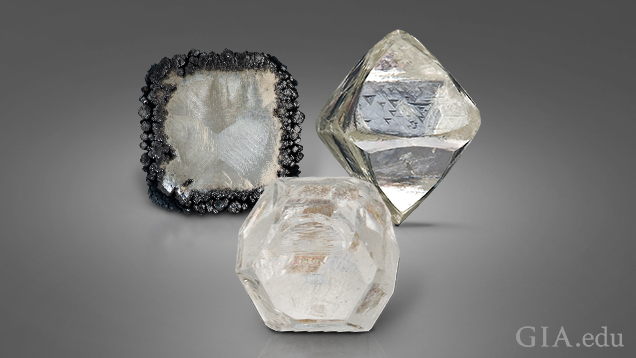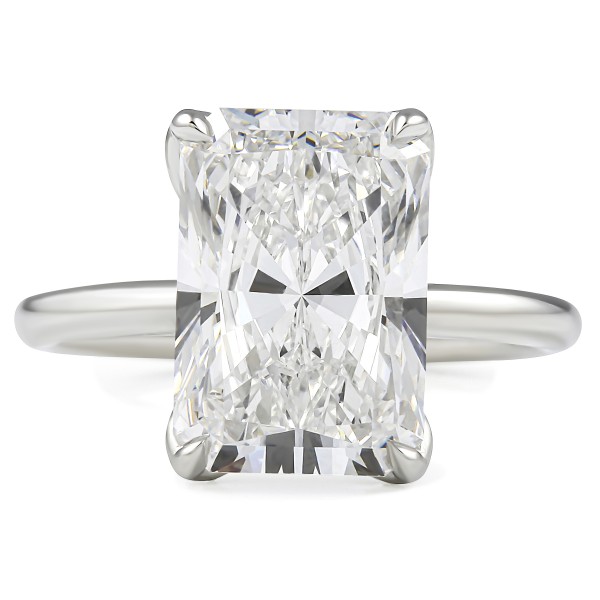Click here to get this article in PDF
With the rise in popularity of lab diamonds in the market, there has been a lot of debate about the benefits and differences between them and natural diamonds. We are not here to push one over the other, we simply want to make sure everyone is educated on the facts.
What are The Benefits Of Lab Diamonds?
While many people still insist that lab diamonds are not real diamonds, it has been proven time and time again that they are, in fact, just as real as natural diamonds. The Federal Trade Commission and the Gemological Institute of America have both agreed that a diamond is a diamond, whether it was formed in a laboratory or in the ground.
Since they are just as real as natural diamonds and have all the same physical, chemical, and optical properties, what truly are the benefits to opting for a lab-grown diamond?
Benefits of a Lower Price Tag
It’s no secret that lab diamonds are over 75% less expensive than their natural diamond counterparts. This is due to the fact that there is an abundance of lab diamonds and there is an infinite number of lab diamonds that can be made. Natural diamonds are a finite resource–a set number of them exist, however many billions, and will eventually run out.
The conceived rarity of natural diamonds makes them more expensive while the influx of lab diamonds on the market makes lab diamonds less expensive. One of the benefits? You can have the exact diamond you want for a more reasonable price or something close to what you want within your budget!


5.12 carat Radiant Cut Lab Diamond Solitaire Engagement Ring
Price: $12,500


5 carat Radiant Cut Diamond Solitaire Engagement Ring
Price: $96,500
Benefits of Availability
Unlike natural diamonds, there is a higher chance that you will find the exact diamond of your dreams in a lab created stone. With more lab diamonds available, there is a higher chance that it exists already. With natural diamonds, it is more difficult to find exactly what you’re looking for a few reasons.
For starters, there are fewer natural diamonds available on the market. In contrast, there are more and more lab-created diamonds entering the market each and every day. When you are looking for your perfect diamond, it is easier to choose from a bigger selection of lab diamonds than a smaller selection of natural diamonds, especially if you already have parameters set.
Second, diamond cutters predetermine the cut of a rough diamond based on how to best utilize the stone and waste less rough diamond. Additionally, some diamond cutters will not cut certain shapes because it wastes more rough diamond leading to fewer of those cuts available in the natural diamond market.
For example, natural antique cushion cut diamonds are more rare as they require more cutting of the rough diamond and some cutters do not want to waste that much stone. Similarly, Asscher cut diamonds are also considered to be rare because they too waste more rough diamond in their cutting process. Diamond cutters are either more comfortable with these cuts on lab diamonds or they are able to do them by machine to avoid wasting so much rough stone.


3.50 carat Antique Cushion Lab Diamond Ring


8.78 Carat Asscher Cut Lab Diamond Five-Stone Ring
Finally, there is also a consistency in quality between lab diamonds. While laboratories cannot control whether a diamond has inclusions, they can control aspects of the diamond that forms. For instance, fancy color diamonds can be created in a lab. Similar to how color is introduced to a natural diamond in its formation, scientists can introduce the same elements to carbon during the lab diamond’s growth process to control its hue.


2.61 carat Oval Yellow Lab Diamond Signature Wrap Ring
Benefits of Shorter Growth Time
Natural diamonds form over billions of years and require extreme heat and pressure within the Earth’s mantle. We won’t have anymore in our lifetime than what’s already moved to the Earth’s crust.
On the other hand, lab-grown diamonds only require 6-12 weeks to form. Either from Chemical Vapor Deposition (CVD) or High Pressure High Temperature (HPHT), this timeline is generally more optimal.
In CVD, a slice of real diamond, also referred to as a diamond seed, is placed into a sealed vacuum chamber. After the chamber fills with carbon-heavy gas, like methane, it’s heated to a high temperature of around 1500 degrees Fahrenheit. The high temperatures convert the gas into plasma, which releases pieces of carbon.
Those carbon pieces build upon the diamond seed originally placed in the chamber. Eventually, a full diamond forms after layer and layer of carbon pieces attach to the seed. The whole process produces incredible, chemically-pure diamonds free of most impurities.
A diamond seed, like the one mentioned in the CVD process, gets placed into a special press with carbon. The area is heated with heating machinery until it reaches a temperature of around 1600 degrees Celsius (or about 2900 Fahrenheit)—greatly exceeding the numbers necessary for CVD. The chamber exerts pressure up to and over 870,000 pounds per square inch.
Molten metal (typically from a source like graphite) in the chamber then dissolves the carbon source, and a diamond begins to form and build around the diamond seed. HPHT diamonds typically have both cubical and octahedral faces.

Benefits of Sustainability
All natural diamonds at Lauren B have gone through the Kimberley Process and are conflict-free. There is always a debate that natural diamonds, even conflict-free diamonds, are not environmentally or ethically friendly. With lab diamonds, energy is used to create them and the environmental impact is reduced.
Differences
Besides all the benefits to choosing a lab diamond, there are a few key differences between a lab and a natural diamond.
Perceived Value—Lab diamonds are not as rare as natural diamonds and are thus considered less valuable.
Future Investment—It is possible that the value of lab diamonds will decrease as time goes on and more lab diamonds become available at the same time natural diamonds become less available.
Sustainability—While there is a benefit that lab diamonds are more eco-friendly than natural diamonds, there is still a considerable amount of energy that goes into creating them.
Benefits of Shopping at Lauren B
Natural or lab, whichever route you choose, Lauren B is here to help you. We have an extensive inventory of loose natural and lab diamonds to browse in store or online. Schedule an appointment to see them in person in our Manhattan showroom or browse online.
